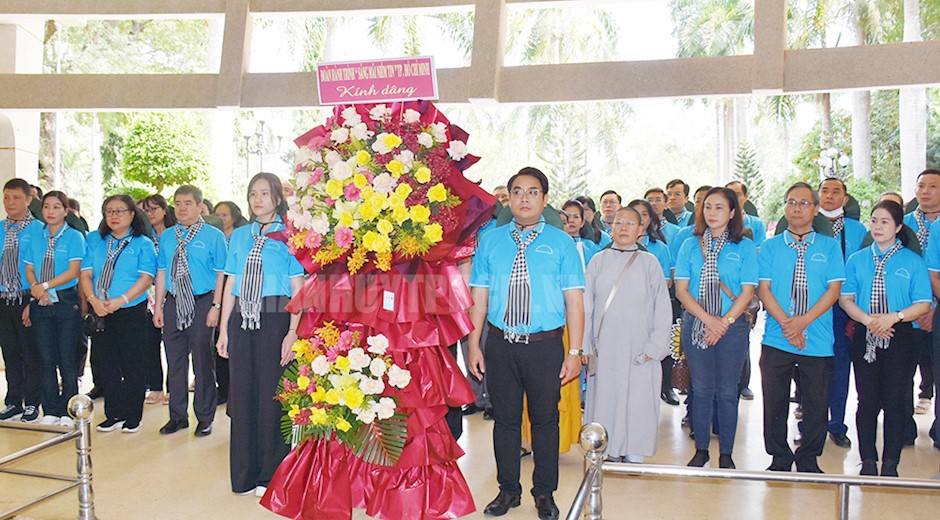The Ho Chi Minh City (HCMC) delegation, including nearly 200 outstanding examples in studying and following Ho Chi Minh's ideology, ethics and style, visited President Ho Chi Minh’s temple in Long Duc commune, Tra Vinh city, Tra Vinh province on March 20-22.

The delegation at President Ho Chi Minh’s Temple (Photo: hcmcpv.org.vn)
In the morning of March 20, the delegation held a ceremony to report their achievements and offered incense at President Ho Chi Minh’s Temple, the national historical relic site in Long Duc commune, Tra Vinh city, Tra Vinh province to commemorate Uncle Ho’s great contributions.
On behalf of the outstanding examples, Ms. Tran Thi Thu Trang, Secretary of the Party Committee of Ward 7, Binh Thanh District, reported to Uncle Ho on the results of implementing Conclusion No. 01-KL/TW, Directive No. 05-CT/TW of the Politburo on promoting studying and following Ho Chi Minh's ideology, ethics, and style in 2023 in HCMC.
In 1969, when hearing the news of Uncle Ho's death, to express their respect, the army and people of Long Duc commune built a temple to Uncle Ho right within the bombs and bullets of the US enemy. The construction of the Temple of President Ho Chi Minh was officially started on March 10, 1970.
After nearly 10 months of construction despite bombs and raids of the enemy, the army and people of Long Duc commune completed President Ho Chi Minh’s Temple, which was officially inaugurated on the 30th day of 12th month of the lunar year of the dog (1970).
In the 5 years from the start of construction until April 29, 1975, the US enemy organized hundreds of raids into the Temple area and they succeeded three times. Then the Long Duc army and people erected the temple again.

Delegates offer flowers at President Ho Chi Minh's Temple (Photo: hcmcpv.org.vn)
On September 30, 1989, President Ho Chi Minh’s Temple was recognized as a national historical and cultural relic, becoming a symbol of affection and pride of the people of Tra Vinh towards the beloved leader of the nation.
In April 2012, Uncle Ho's stilt house, designed by the Center for Exhibition Application under the Ho Chi Minh Museum, continued to be built in President Ho Chi Minh’s Temple relic site.
The temple's campus now has an area of 5.3 hectares, including many important items such as exhibition house and stilt house, and has become a place for historical education, cultural preservation and tourism development./.
BTA